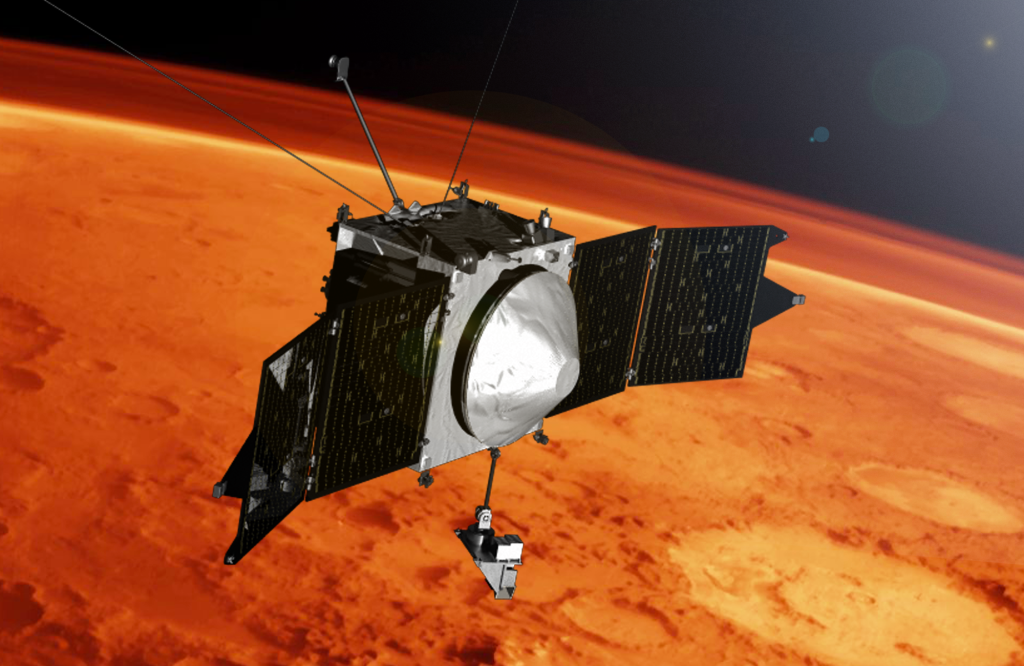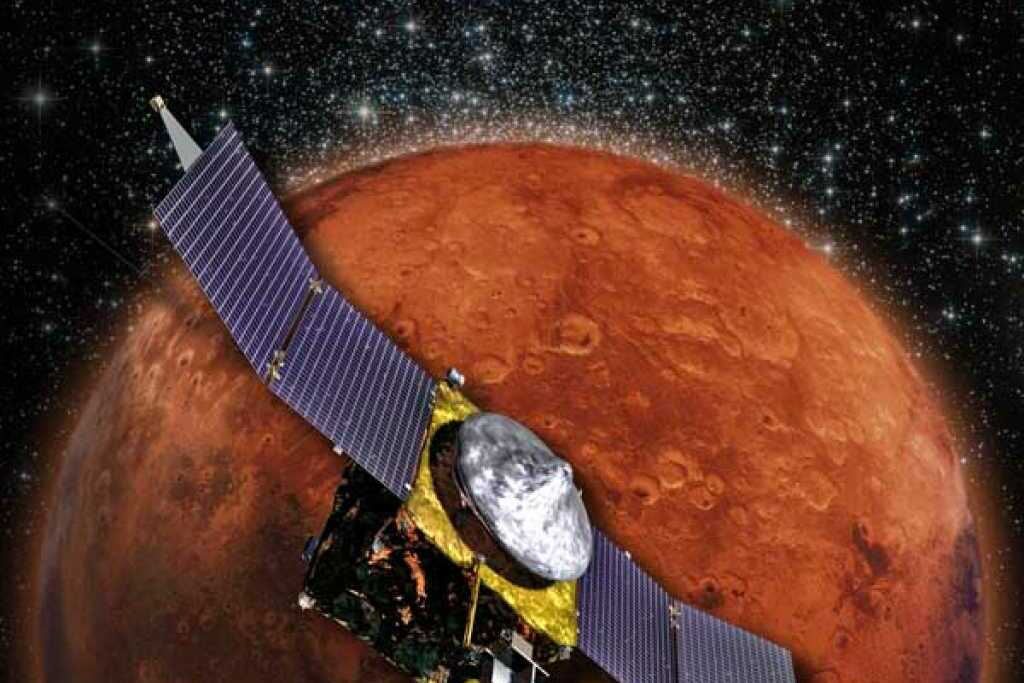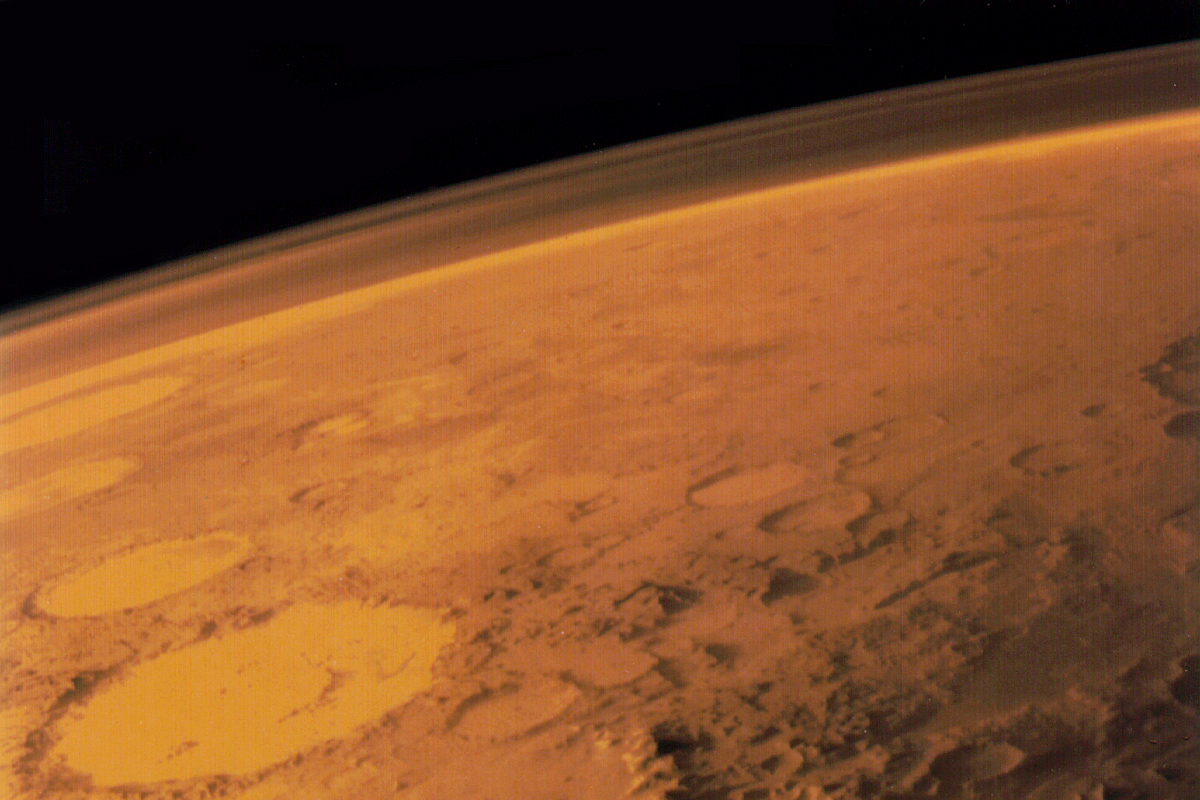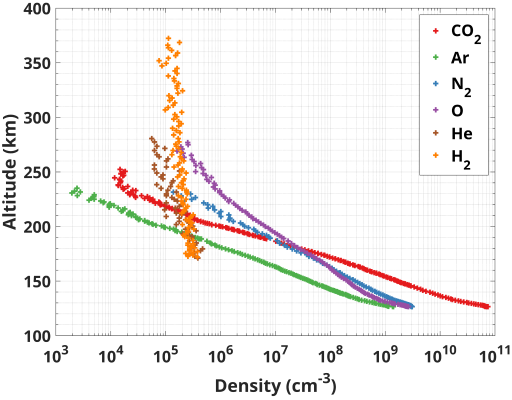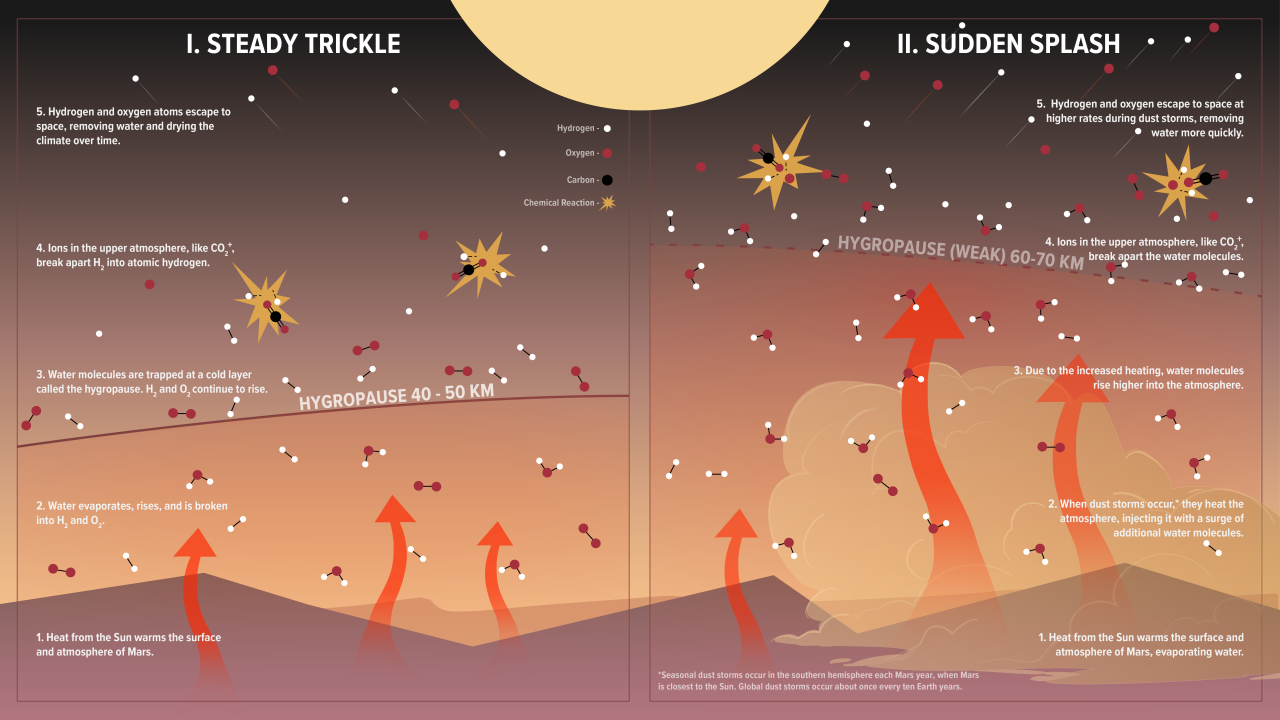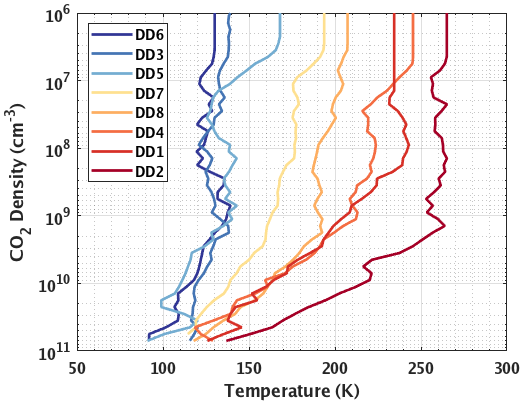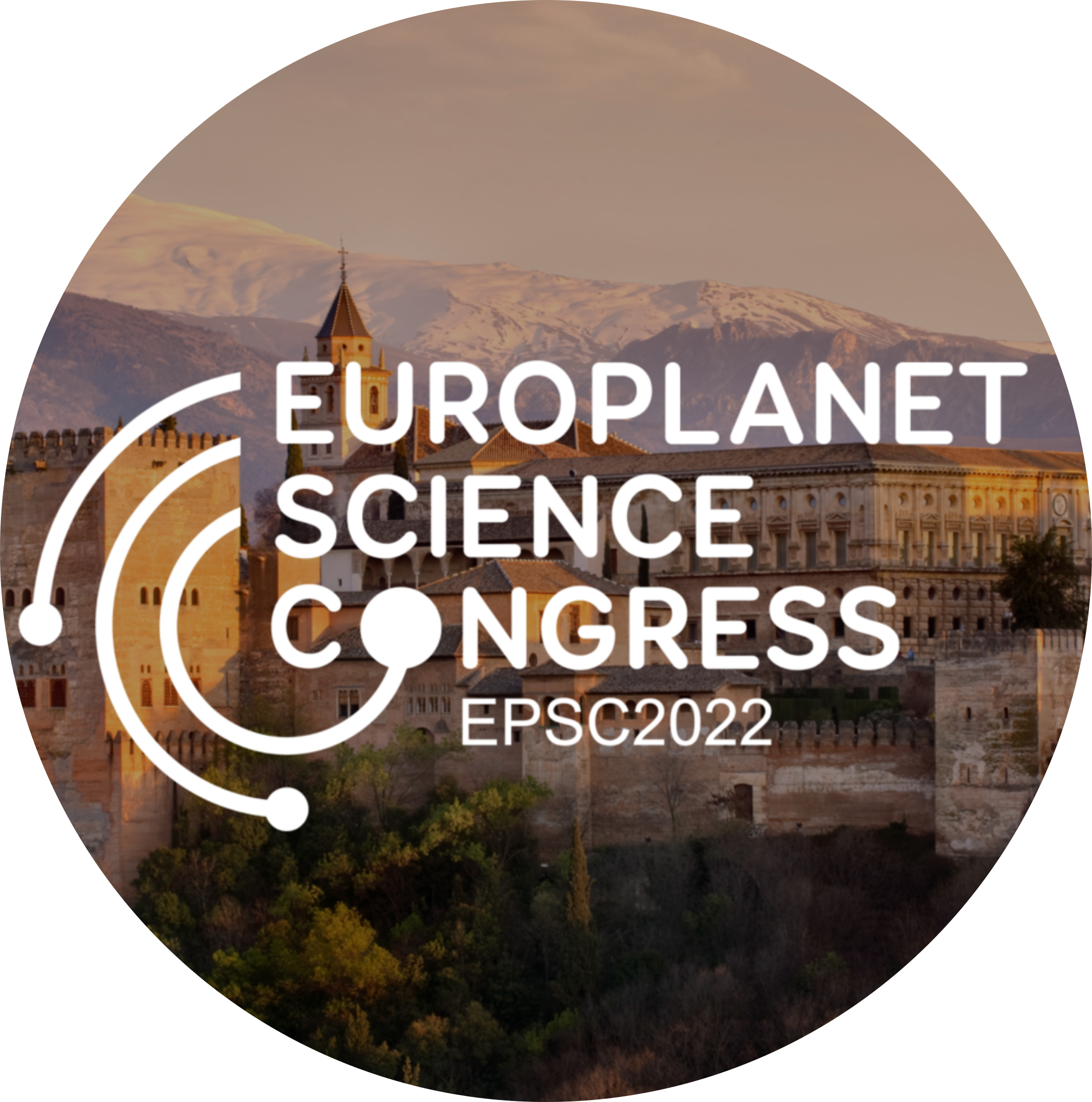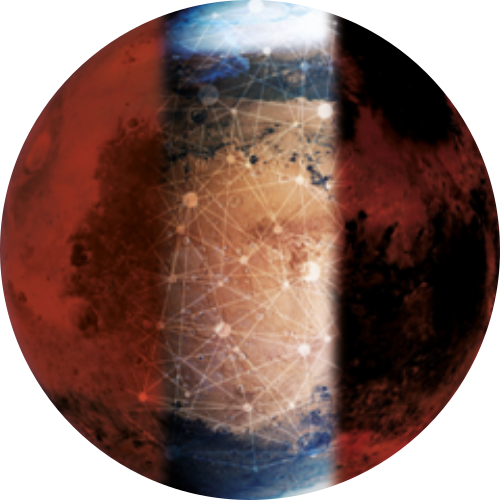Research
Click on an image for more detail.
Neutral Composition of the Martian Upper Atmosphere
We use MAVEN NGIMS data to investigate the composition of the Martian upper atmosphere, focusing on the variations of CO2, Ar, N2, O, He, and H2 with Martian local time, latitude, season, and temperature. We find large diurnal variations in the abundances of the lighter species: N2, O, He, and H2. Our measurements are the first vertical profiles and the first spatially- and temporally-resolved measurements of the H2 abundance on Mars.
Martian Upper Atmospheric H2O
We discovered substantial amounts of H2O in the upper atmosphere of Mars, around 150 km above the surface, throughout the Martian year. The upper atmospheric water abundance peaks when Mars is closest to the Sun during summer in its southern hemisphere. Martian dust storms, including the 2018 global storm which put the Opportunity rover out of commission, are a sudden splash of water into the upper atmosphere. The classical process for delivery of hydrogen, in contrast, delivers a steady trickle of hydrogen to the upper atmosphere in the form of H2.
Thermal Structure of the Martian Upper Atmosphere
We derive neutral temperatures from Ar, CO2, and N2 abundances measured by MAVEN NGIMS over 1.5 Martian years. The temperature profiles cover an altitude range of 150 to roughly 300 km on nominal orbits. During Deep Dips, temperature profiles extend down to about 125 km, near the mesopause. We characterize thermospheric gradients and exospheric temperatures. The thermal structure of the Martian upper atmosphere is important for quantifying loss of the atmosphere to space.
